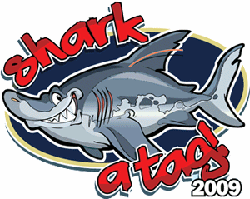 ANOTHER shark tagging marathon beckons this summer, thanks to those industrious folk at the Scottish Sea Angling Conservation Network. This time it’s in the interests of the tope, the largest of the inshore sharks and another endangered species whose population the conservationists estimate has shrunk by 50% in UK waters. Its nickname of the “soupfin shark” says it all really.
ANOTHER shark tagging marathon beckons this summer, thanks to those industrious folk at the Scottish Sea Angling Conservation Network. This time it’s in the interests of the tope, the largest of the inshore sharks and another endangered species whose population the conservationists estimate has shrunk by 50% in UK waters. Its nickname of the “soupfin shark” says it all really.
More than 100 craft and 300 anglers from all over the UK are expected at the three-day “Sharkatag” from June 12-14 based around Drummore, Sandhead and the Isle of Whithorn in the south-west. The organisers are building on the huge success of their spurdog tagging weekend last November when more than 85 anglers participated in lochs Sunart and Etive.
The SSACN is one of the most active and politically-vocal angling pressure groups around and has the backing of a large and active support who are prepared to back their words with actions. Their motives are firmly rooted, as their name suggests, in delivering fundamental change to the way in which our seas’ resources are managed and developed for the benefit of all – not just commercial sea fishing interests.

“Anecdotal evidence, no matter how obvious the situation is, is unacceptable and the government require further evidence through field-based research before they are will to take any action.”
The SSACN’s hand is expected to be strengthened this spring when the Government announces the results of a study into the economic impact of sea angling in Scotland. It is expected to confirm that the sport is worth £150m annually, almost as much as the revenue derived from overseas golf tourists and well ahead of all other angling disciplines.
The tope, a summer visitor to the waters off the south-west of Scotland from its winter feeding grounds in the Azores and Bay of Biscay, contributes significantly to the region’s sea angling which SSACN estimates to be worth £30-40m a year to the local economy.